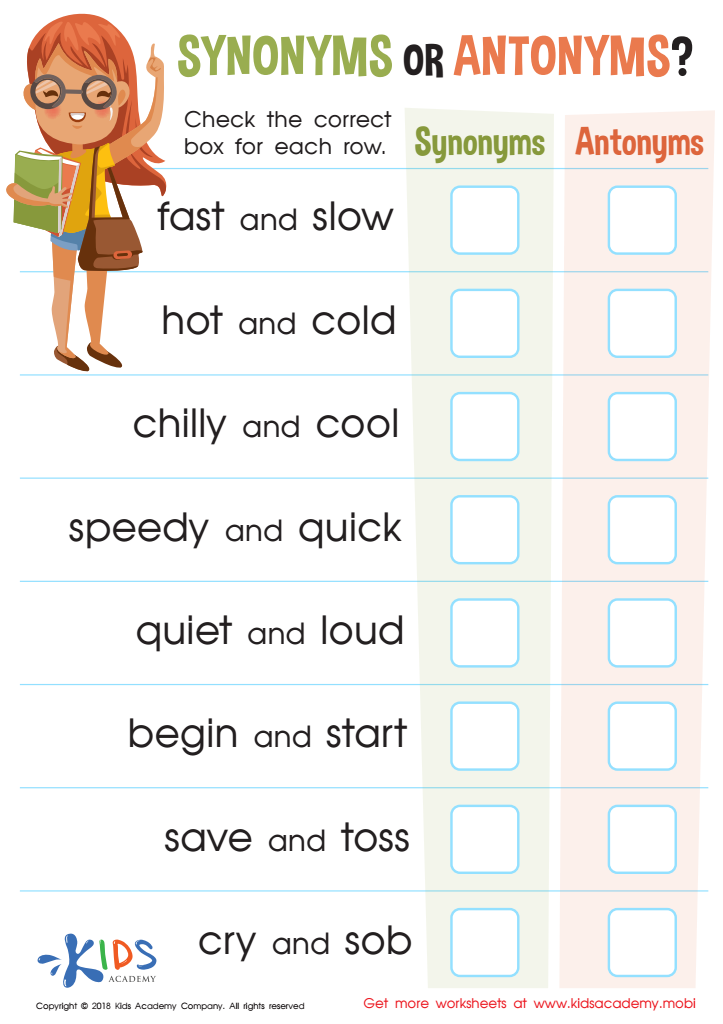Normal Reading worksheets activities for Ages 7-9
4 filtered results
-
From - To
Explore our engaging Normal Reading worksheets designed specifically for children aged 7-9! These activities provide an ideal way to enhance reading comprehension skills while promoting a love for learning. Our worksheets include a variety of fun exercises that align with age-appropriate reading levels, making it easier for kids to grasp essential concepts. With colorful visuals and relatable themes, students will enjoy honing their abilities as they tackle questions that encourage critical thinking and analysis. Perfect for classroom use or at-home practice, these resources nurture young readers, helping them build confidence and improve their reading proficiency efficiently and enjoyably.


Synonyms or Antonyms: Assessment Worksheet


Spinosaurus Assessment Worksheet


Assessment: First Thanksgiving Worksheet


Think About It: Assessment Worksheet
Parents and teachers should care about Normal Reading activities for children aged 7-9 because these activities play a critical role in developing foundational literacy skills that are essential for academic success and lifelong learning. At this age, children transition from learning to read to reading to learn, making it crucial for them to engage with texts that align with their comprehension levels. Structured reading activities can enhance vocabulary, improve fluency, and foster critical thinking skills, laying the groundwork for more complex texts in later years.
Moreover, reading together encourages a love for literature, helping children to cultivate their imagination and empathy. Engaging in Normal Reading activities promotes cognitive development, as these exercises challenge young minds to think critically and connect ideas. If parents and teachers incorporate interactive reading discussions and diverse reading materials, it will support children's understanding of the world around them.
Normal Reading activities also strengthen the parent-child and teacher-student relationships, creating a shared experience that fosters communication and emotional bonding. Additionally, early reading competency correlates with future academic achievement; thus, prioritizing these activities can help ensure children are well-prepared for more advanced learning challenges. Ultimately, investing in normal reading practices at this age paves the way for a brighter educational future.
 Assign to My Students
Assign to My Students















